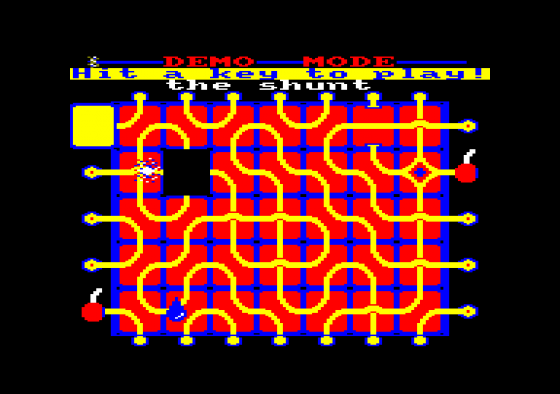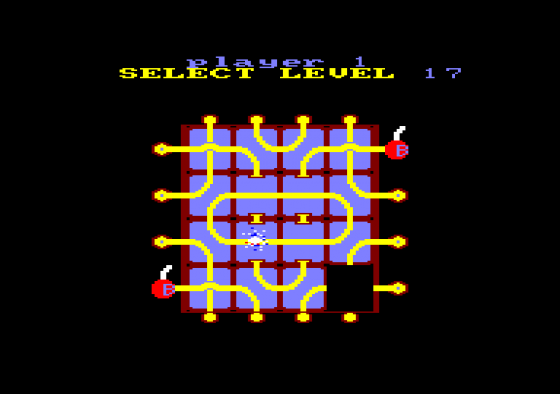
Amstrad Computer User
 1st June 1985
1st June 1985
Published in Amstrad Computer User #7
Confuzion
Confuzion is an arcade style game of fast reflexes and quick thinking. It uses an original game concept, making it very difficult to describe. It can't be called a Pacman variant or a Defender clone, but in the future we may be able to describe games as Confuzion variants.
What is the original format that Confuzion uses? The basic aim of the game is to explode a number of bombs by guiding a spark to ignite them. The spark travels along a track laid out in sections on a collection of blocks. The blocks are moveable like the blocks in a sliding puzzle, the type of puzzle where there is a square missing and the pieces are shuffled round. As the spark travels, a fuse at the top of the screen burns down, creating a time limit in which all the bombs must be exploded. The player has to manipulate the blocks, forming a route between the spark and one of the bombs.
At the lower levels of the 64 levels of play, you start with less blocks on which to move, less bombs to explode, and fewer droplets. Droplets travel along the tracks and will extinguish a spark if they collide.

The presentation of the game is very good. For example there is an excellent demonstration of various techniques for juggling blocks. After every eighth level there is a bonus sheet to play and after every fourth level you gain an extra spark. It is possible to start a game at a choice of six levels and also to restart. a game at the level you managed to reach.
Play is by joystick or keyboard. It is possible to redefine the keys although the cursor keys should suit most people. The joystick. is used to pull a block into an empty space in the grid, creating another empty space.
So the direction you wish the block to come from, is the direction you move the joystick in. This is a difficult skill to develop so an option to reverse the action of the joystick has been included. The fire button on the joystick has the effect of speeding up the travelling spark and this is useful if you are certain that you have the correct route mapped out. The graphics are quite good, movement is very smooth and all the pieces are large and clear. I think there will be a number of people who will become Confuzion addicts but not everyone will enjoy playing it.
It is very difficult to do the mental calculations, to move the blocks into the correct positions, at the speed the game requires. Simple fast reactions are no good for this game, you need to know what you are doing. On the other hand it is possible to 'learn' a screen and complete it every time. So if you enjoy games that need good timing and specific moves you may enjoy Confuzion.





